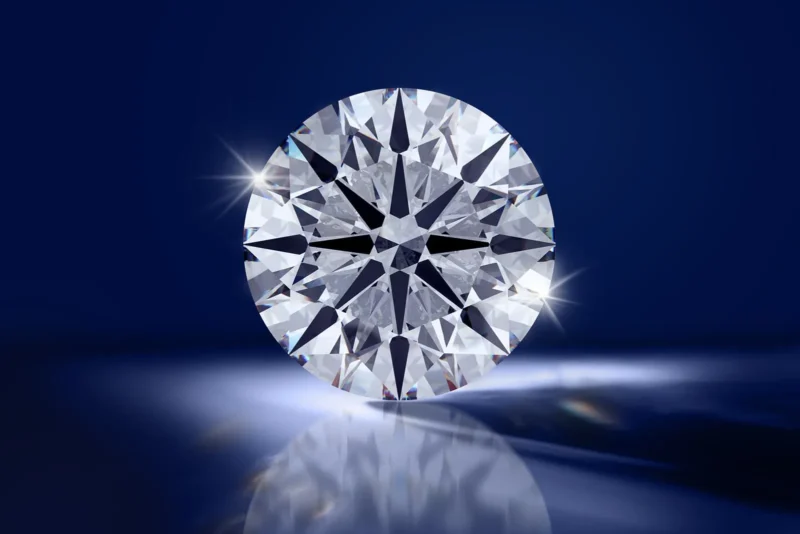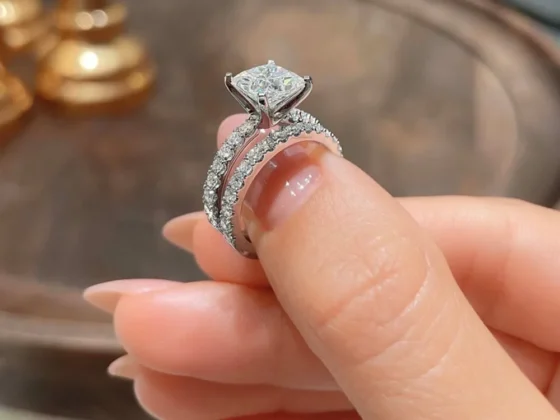From its dazzling light to its iconic status, diamonds have captivated us for centuries. But what is the science behind why these precious gemstones sparkle so brightly? In this article, we explore the secrets of diamond brilliance and uncover the scientific reason that makes diamonds shine.
From their unique molecular structure to how they interact with light, discover why diamonds are truly a sight to behold!
Understanding How Diamonds Shine: The Physics Behind Its Brilliance
Despite its natural beauty, understanding the science behind why diamonds shine requires a bit of explanation. The sparkle that captivates us is caused by the diamond’s internal structure and its ability to refract light.
To understand this, it’s important to know how diamonds are formed in nature. Diamonds form when carbon atoms join together in ideal conditions of extreme heat and pressure deep within the Earth’s mantle – reaching temperatures of up to 2200°C! This intense heat creates a crystalline lattice structure that gives diamonds their unique properties – including their incredible ability to sparkle with brilliance.
The secret lies within the molecular arrangement of each diamond; these arrangements create microscopic imperfections on the surface which act as tiny mirrors reflecting light at different angles – creating what we call ‘fire’ or ‘brilliance’. As light passes through each faceted plane, it is divided into spectral colors before bouncing off other facets and eventually being reflected out from all angles giving off an impressive display of color and brilliance! This phenomenon is known as total internal reflection (TIR), meaning that most of the light entering a diamond reflects towards its source without ever leaving its interior; resulting in maximum visibility for observers – hence why we see so much more dazzling fire compared to other gemstones like sapphires or rubies!
Analyzing Color and Clarity: Grading the Characteristics of a Diamond
:max_bytes(150000):strip_icc()/labgrownlede-2b7540f7f7404558a08f1a555862f3d3.jpg)
When it comes to determining the value of a diamond, analyzing color and clarity are among the most important factors. Color is often graded on a scale from D-Z with D being completely colorless and Z having a very light yellow or brown hue.
Clarity grades range from IF (internally flawless) to I3 (included). These grades are based on inclusions such as bubbles, feathers, and clouds which can be seen under 10x magnification.
When examining diamonds for grading purposes it’s also important to note any other characteristics that could affect its sparkle factor such as fluorescence or crown angle. Ultimately this information will help you make an informed decision when selecting the perfect stone for your special occasion!
The History and Evolution of Jewelry Crafted with Precious Gems
For centuries, people have been fascinated by the beauty of jewelry crafted from precious gems. From ancient Egypt to the modern day, humans have sought out these sparkling stones for their unique and captivating qualities.
The science behind why diamonds shine has long been studied, but jewelers have also developed a rich history and tradition of creating dazzling pieces from various gemstones. From the earliest days of civilization, jewelry was used as a form of adornment and spiritual expression.
Ancient Egyptians were among the first to craft necklaces and other jewelry with turquoise, lapis lazuli, carnelian, emeralds, and amethyst. As trade spread throughout Europe in medieval times, more exotic gems like rubies and sapphires began appearing in rings or pendants set with gold or silver – often containing intricate designs that showcased a masterful skill level of craftsmanship.
As technology advanced through the ages so did methods for cutting and setting stones in different shapes that could be used to create beautiful works of art ranging from simple stud earrings to elaborate crowns fit for royalty. Throughout this evolution there was one common thread between all these styles; each piece contained some type of precious stone that glittered brilliantly when worn against light fabric or sunlight’s rays – making it an essential item for any wardrobe! Today jewelers continue to use traditional techniques while incorporating new technologies to craft stunning pieces featuring diamond cuts such as princess cut solitaires or marquise-style settings surrounded by pave encrusted halo accents highlighted by tiny bright colored gemstones like peridot or aquamarine – giving them an added sparkle which is sure to please any eye!
Crafting Lab-Grown Diamonds: A New Way to Create Affordable Brilliance

The art of crafting beautiful and brilliant diamonds has been around for decades. But in recent years, a new way to create affordable brilliance has emerged.
Lab-grown diamonds are made from specially altered carbon molecules that mimic the same crystalline structure as mined gems. This process allows jewelers to craft custom pieces that rival even the most exquisite stones found deep within the earth’s crust without breaking the bank.
While lab-grown diamonds may be created in a laboratory instead of at high pressure and temperatures beneath the Earth’s surface, they offer all of the same beauty and sparkle as their mined counterparts due to their identical molecular makeup. Human eyesight alone can’t tell them apart! As such, these lab-crafted gems provide an ethical alternative with no compromise on quality or aesthetics – perfect for those looking for something truly unique but still wanting an economically sound purchase.
Conclusion
Diamonds have been prized for centuries, and this article has explored the science of why diamonds sparkle and shine. With its unique properties that make it both incredibly rare and beautiful, a diamond is an ideal choice for engagement rings or jewelry to commemorate special moments. Its ability to refract light into different colors gives it an otherworldly beauty that has long captivated people around the world.
While many things may sparkle in life, nothing quite compares to the brilliance of a diamond.


